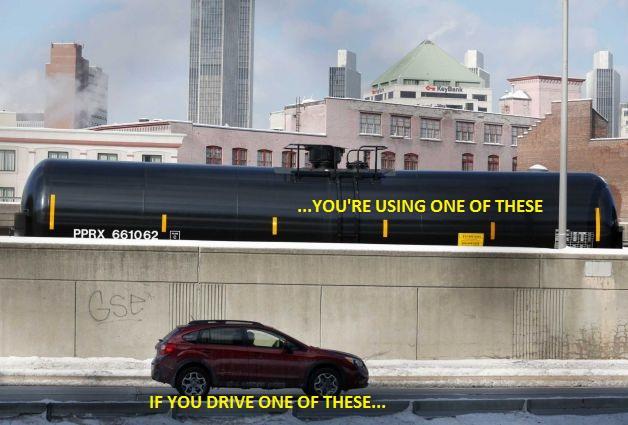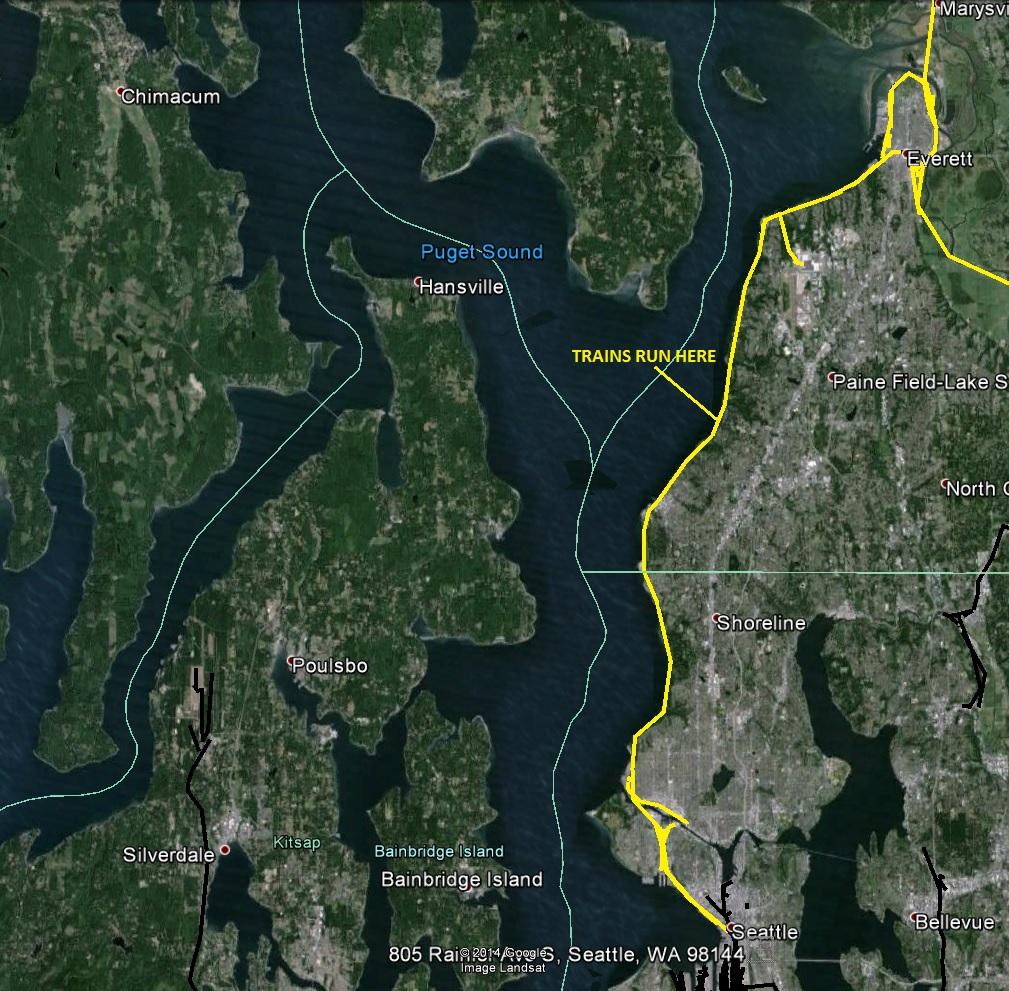The other day I was driving across the Albro Place bridge and had to stop to take a picture of this mile-long oil train waiting for the all-clear to continue on its way to the Cherry Point refineries. I couldn’t help but think about where that oil was ultimately going – to the fuel tanks of Puget Sound area cars, trucks, and planes. The train itself looked like a 10-foot diameter pipeline stretching into the distance, and it consisted of about (100) 28,000 gallon cars, presumably carrying 2.8 million gallons of Bakken crude, on its way to release 22,000 metric tons of CO2, much of it through the tailpipes of the local automobile fleet. The contents of the train would occupy 11 miles of 3 foot pipeline, and this amount of oil moves through Seattle twice per day. As Alaska crude dwindles, more trains will come.

Then, earlier this week emergency managers warned the Seattle City Council of the threat posed to the city by the presence and movement of these trains, and pointed out that BNSF doesn’t have nearly the insurance to cover the cost of a spill or explosion should that occur in town. Not mentioned is the track that runs along 28 miles of the beaches of Puget Sound until it turns inland at Everett, only to emerge again across the Padilla Bay estuary. A major derailment accident along this route is unthinkable, with trains that carry a quarter of what the Exxon Valdez spilled into Prince William Sound.

Most people around here are opposed to oil trains running through town, but most are also dependent on them. That is the sad irony, that we expect the railroad executives to stop sending the very trains that we rely on. Until we are serious about eliminating carbon emissions from our personal lives, the pushers of carbon fuels will be glad to supply us with our fix.

Happily, there are more and more electric vehicle models appearing every year, and the trend is toward higher battery capacity. Larger cars and light trucks will be taking their place alongside the first crop of EVs and the market will grow, but we have a lot more work to do to make these available to everyone who drives, such as curb-side public charging, more variety of EV models, and lower prices.
If you have already made the move to driving electric, my hat is off to you; if you are still driving your 15% efficient, climate changing, 100-year-old technology, I only ask that you test drive an EV and think about how one would fit in your life.
